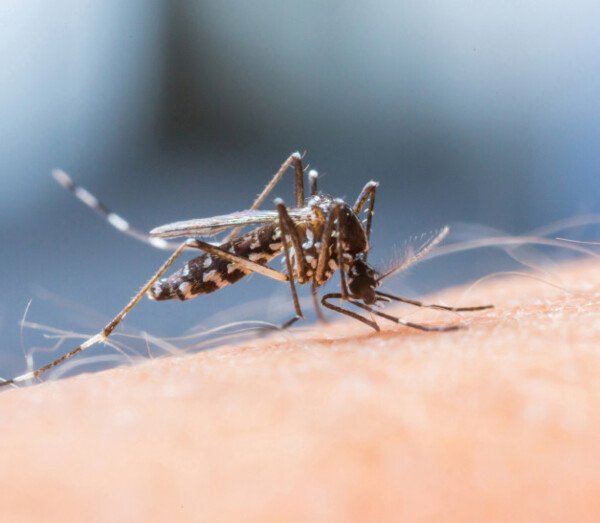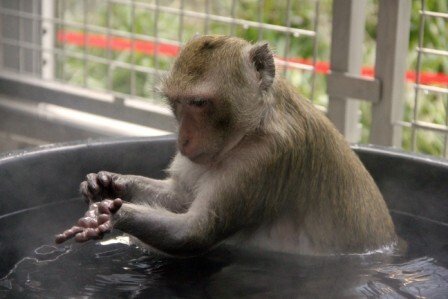Research on monkeys
A large part of the experimental research at KI is carried out in test tubes or cell cultures, for example. Monkeys are only used in animal experiments when other methods or animal species cannot be used. They are mainly used in studies of diseases of the brain, and in experiments for the development of vaccines or treatments of severe infectious diseases.
Animal experiments in Sweden are subject to approval by an ethics board
A large part of the experimental research is done in test tubes or cell cultures, for example, but it is not yet possible to replace all use of lab animals. Animal experiments are needed, for example, to evaluate if treatments and medicines affect other processes in the body.
Using animals in scientific research is strictly regulated and governed by Swedish and EU legislation on animal protection. In order to conduct animal experiments in Sweden, the researcher must first apply for permission from an animal experiment ethics board, which conducts an ethical review of the experiment and weighs the impact on the animals against the public interest of the research. Research representatives and laymen, including representatives from animal protection organisations, sit on the animal experiment ethics boards.
Monkeys’ living environment and social environment

The Astrid Fagræus laboratory (KM-F) at KI where the research on monkeys is done is accredited by the organisation AAALAC International for its high quality in animal welfare. KM-F houses one of the few facilities in Sweden that are approved to conduct animal experiments according to GLP (Good Laboratory Practice).
Everyone who conducts research or works with animals at Karolinska Institutet - researchers, students and animal technicians – must undergo training and maintain their competence in animal experiment knowledge.
The monkeys are kept in an environment outfitted to meet their needs to express their natural behaviour and socially interact in their group. Read more about our monkeys’ living environment and social environment.
Research at Karolinska Institutet
Monkeys are only used in animal experiments when other methods or animal species cannot be used. This mainly concerns studies of diseases of the brain, and in experiments for the development of vaccines against severe infectious diseases.

Our understanding of the HIV virus and the antiretroviral medicines available today are the result of medical research on animals.
Other examples where research on monkeys was necessary are the development of medicines against certain kinds of cancer and several neurological disorders (Alzheimer’s, Parkinson’s, epilepsi), and in the development of vaccines against, for example, malaria.
Vaccine research
In order to get a complete picture of the interactions between the immune system and a vaccine, and to evaluate if a lasting immunity develops, it is necessary to use monkeys in the research. Their immune system is very similar to the human immune system, which differs in several respects from rodents, for example.
The anatomical similarities between monkeys and humans and the possibility of testing vaccine doses is also a major advantage when evaluating results and drawing conclusions to then continue to clinical trials on humans. The target group for vaccines is most often healthy people, including children. This means that there is an extra precautionary aspect to ensure that the vaccine is both safe and has a protective effect.
Successful vaccine development requires in-depth understanding, both about the gene that the vaccine is intended for and about the immune system. New vaccines are refined in several steps with extensive tests in test tubes, followed by several rounds of tests on smaller animals. Vaccines that show promising results and where potential tests on humans may be motivated are selected for final evaluation in monkeys.
PET camera to study the functions of the brain

In addition to vaccine research, monkeys are also used in research with a so-called positron emission tomography (PET) camera where extensive progress has been made, especially in research on the structure and functions of the brain. This technology is also very important for locating tumours and developing new medications. This is very important research to develop medicines for various neurological disorders, such as Alzheimer’s, Parkinson’s, schizophrenia and other mental disorders.
Genetic databases contribute to the 3Rs
Genetic databases also contribute to the formulation and interpretation of results from vaccine trials, and can at the same time contribute to what is called the 3Rs (Reduce/refine/replace). Studies on non-human primates therefore help researchers obtain an important basic understanding of a model that is relevant to hasten vaccine development.
